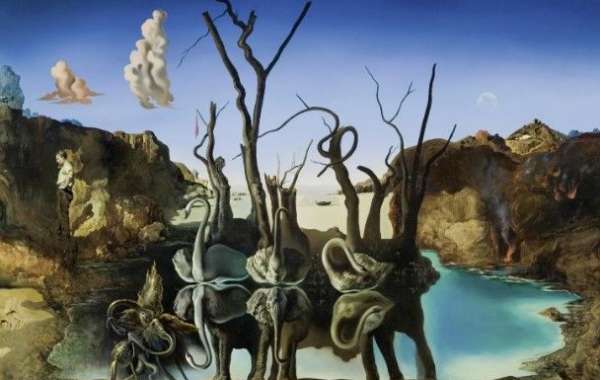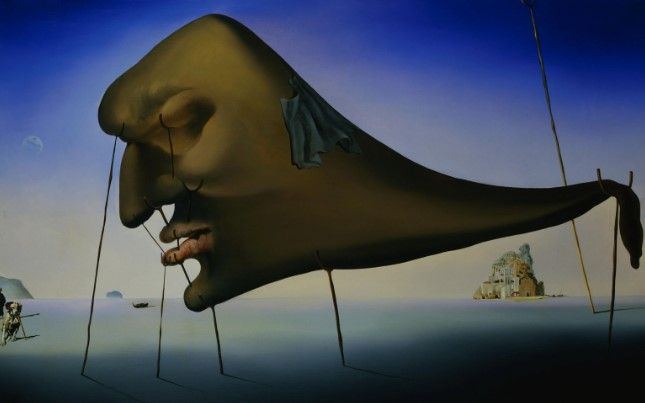“The Swing” by Jean-Honoré Fragonard
Fragonard’s painting seems lighthearted, showing a young woman playfully swinging while sunlight illuminates her aristocratic face. But upon closer inspection, hidden meaning appears: a man in the bushes, thought to be the woman’s husband, watches as she flirts with her lover in plain sight. A statue of Cupid to the left holds a finger to his lips, signaling secrecy.
“The Old Fisherman” by Tivadar Csontváry Kosztka
At first glance, this 1902 painting seems straightforward. But if a mirror is placed vertically down the center, it reveals a striking duality: one side reflects a serene God-like figure, the other a sinister, devilish one. Through this duality, the artist reminds us that good and evil coexist within each of us.

“Mao Zedong” by Andy Warhol
Warhol’s portrait of Mao is an ironic take on communist China’s grey, uniform society. While Mao’s portraits often promoted conformity, Warhol countered this with vibrant colors, symbolizing the contrast between individuality and the monotony of communist ideology.
“Metamorphosis of Narcissus” by Salvador Dalí
Inspired by the Greek myth of Narcissus, Dalí’s surreal depiction captures the young man’s transformation, as his reflection morphs into a hand holding an egg, symbolizing rebirth as the flower Narcissus.
“The Sleep of Reason Produces Monsters” by Francisco Goya
This haunting 18th-century image shows a sleeping man surrounded by ominous creatures, criticizing the irrationality of superstition. Goya saw unchecked imagination as a pathway to society’s worst fears and vices.
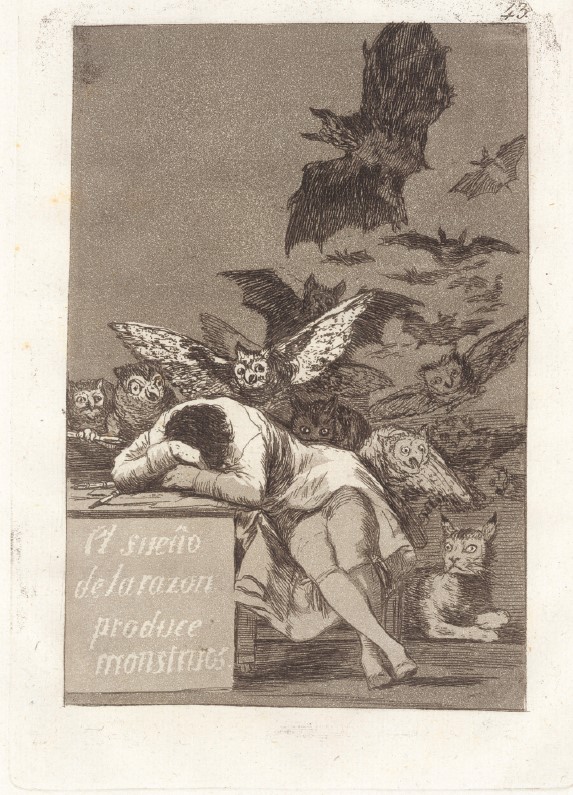
“Bull’s Head” by Pablo Picasso
In 1944, Picasso created this sculpture from a bicycle seat and handlebars, challenging viewers to see both a bull’s head and the original parts. His work reflects Immanuel Kant’s philosophy that art should inspire contemplation and broaden perspectives.
“The Last Supper” by Leonardo da Vinci
In this iconic work, da Vinci captures the moment Jesus announces his betrayal. Judas lurks nearby, with a spilled salt cellar—an omen of misfortune—emphasizing the hidden tensions among the disciples.
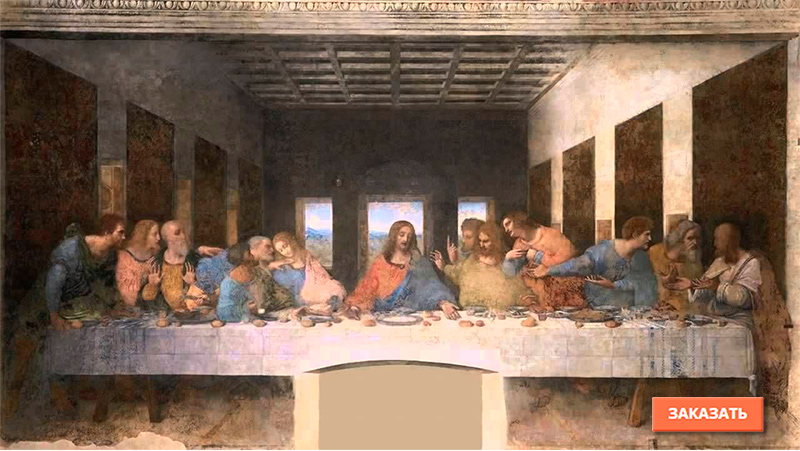
“Mona Lisa” by Leonardo da Vinci
Da Vinci’s enigmatic masterpiece holds countless mysteries, from the elusive smile to hidden letters and symbols, making her the eternal subject of speculation.
“The Creation of Adam” by Michelangelo
Michelangelo's fresco is layered with symbolism, with God and his entourage floating within a shape resembling the human brain, an allusion to the divine spark of consciousness.
“Cold Dark Matter: An Exploded View” by Cornelia Parker
Parker’s installation captures the frozen chaos of an explosion, reminding us of time’s fleeting and transformative nature. Created from the remains of a detonated shed, it evokes both destruction and suspended animation.
“Seaside Scene” by Hendrick van Anthonissen
X-ray analysis revealed a hidden beached whale at the painting’s center, initially covered up by the artist. This transformation shifted the painting’s entire narrative.
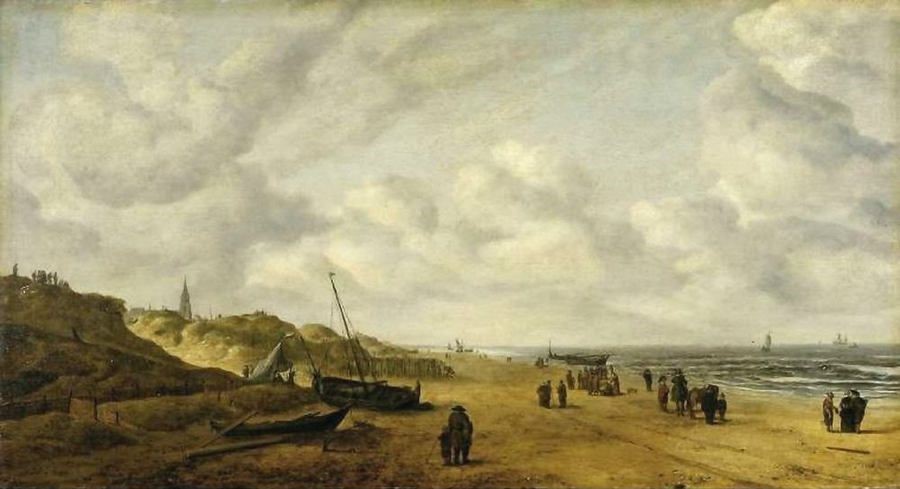
“The Persistence of Memory” by Salvador Dalí
Inspired by a melting camembert cheese, Dalí’s soft clocks represent the fluid nature of time, hinting at Einstein’s theories of relativity and the subjective experience of time.
“Where Do We Come From? What Are We? Where Are We Going?” by Paul Gauguin
Gauguin's painting from his time in Tahiti captures the essence of human life and its phases through
symbols like the child, fruit-bearing man, and aged woman.
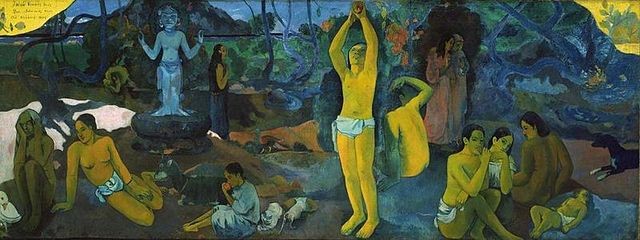
“The Garden of Earthly Delights” by Hieronymus Bosch
Bosch’s intricate triptych overflows with fantastical and symbolic creatures. Each panel—from creation to paradise to hell—carries hidden moral messages.
“Summertime: Number 9A” by Jackson Pollock
Pollock’s drip-paint technique shocked the art world, symbolizing a break from tradition and embodying the spirit of creative freedom. His abstract works invite viewers to find personal meaning in every layer and brushstroke.
Art has long served as a mirror for humanity, reflecting both our dreams and our deepest questions. These masterpieces remind us that great art often speaks in layers, offering insights to those who look beyond the surface. As we’ve seen, the hidden meanings within each brushstroke, figure, and color reveal messages about love, transformation, morality, and the nature of time itself. Exploring these interpretations invites us to view art—and the world around us—with curiosity and wonder. Thank you for joining us in uncovering the mysteries of these iconic works.
